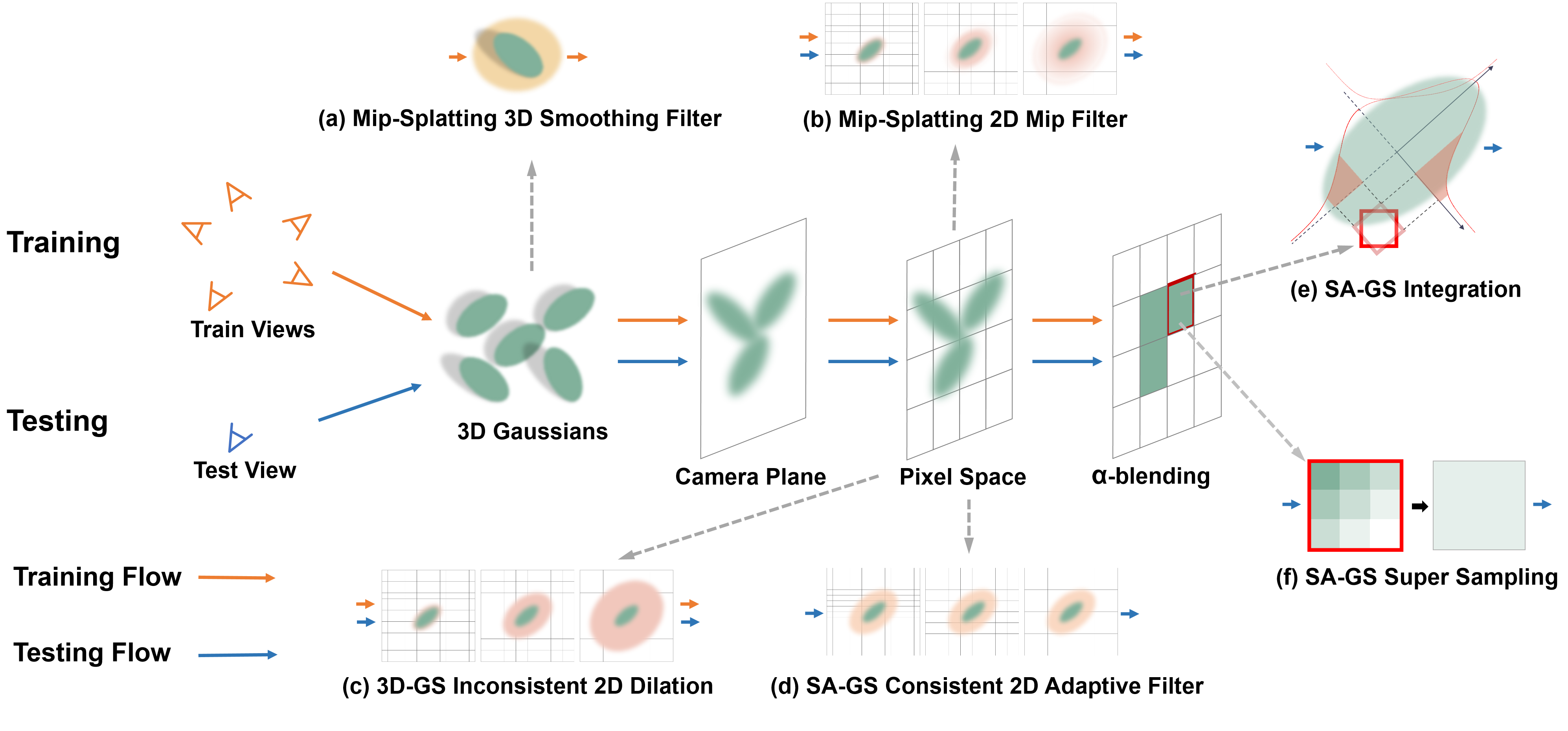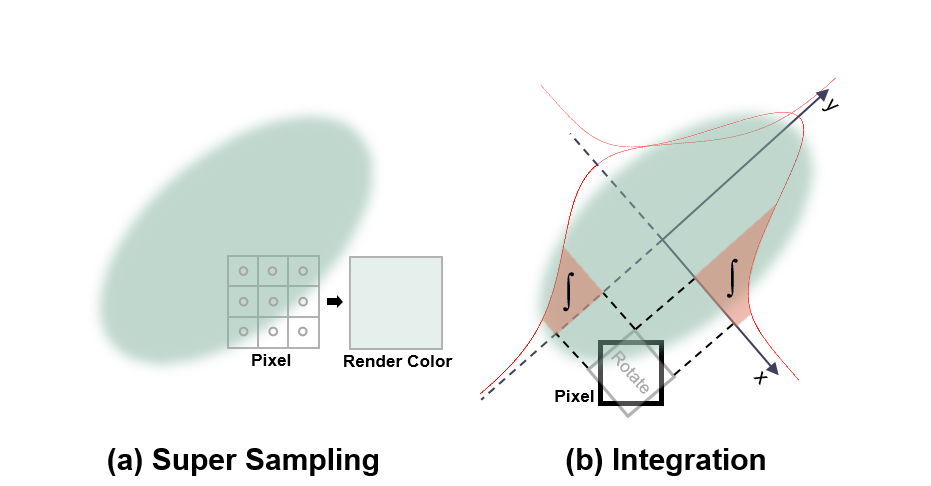
Under zoom-in, 3D Gaussian Splatting (3DGS) exhibits significant erosion artefacts, while under zoom-out, it undergoes dramatic dilation. Mip-Splatting utilizes 3D smoothing and 2D Mip filters to regularize primitives during training. In contrast, our method is training-free and maintains scale consistency using solely a single 2D scale-adaptive filter. Scale adaptation allows us to use super-sampling (named as SA-GSsup in the future) and its limiting case integration (named as SA-GSint in the future) to obtain more accurate results when zooming out.












